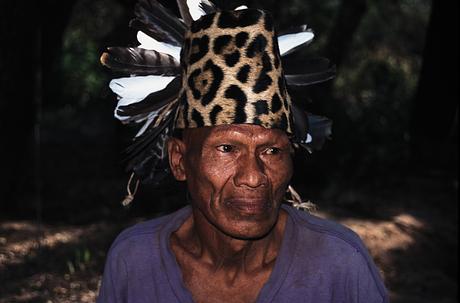Ayoreo Indian dies after first contact
May 7, 2008
This page was last updated in 2008 and may contain language which is now outdated.
A Paraguayan Indian, who lived without contact with the outside world until 1998, has died of tuberculosis. Survival International has called his life, ‘a symbol of the fate of Indigenous people in the Americas since Columbus’.
Ayoreo-Totobiegosode Indian Parojnai’s life changed forever when in 1998 the destruction of the Chaco forest forced him, his wife and their children to make their first contact with the outside world. For many years they had lived on the run, hiding from the bulldozers which were clearing the forest.
Parojnai told Survival campaigner Jonathan Mazower, ‘We ran from one place to another. It looked like the bulldozer was following us. I had to leave my tools, my bow, my rope to run faster… We thought that the bulldozer had seen our garden and came to eat the fruit – and to eat us too.’
Parojnai and his family finally made contact with the driver of a bulldozer. They approached his home, hugged him and told him in their own language, ‘Don’t be afraid of us, we are good people.’ The man was terrified, but gave them food and water, and gave Parojnai’s wife his football shirt.
Mazower, who visited Parojnai and his family in 2003 and in 2007, said today, ‘When I first met Parojnai, he was already very sick. But I’ve seen pictures of him taken on the day after first contact and he was incredibly fit and healthy then.
‘For me, Parojnai’s life symbolises the fate of Indigenous people in the Americas since Columbus. Loss of his land to outsiders forced him to give up his independence, and contact left him sick with a disease that eventually killed him. The same tragedies faced by Indians 500 years ago are being played out today for the world’s last remaining uncontacted tribes.’
Parojnai did not know his age, but is thought to have been about fifty years old.
Photos and footage available. For further information contact Miriam Ross
on (+44) (0)20 7687 8734 or email [email protected]
Read Parojnai’s account of life before contact
Read Parojnai’s wife Ibore’s account of the family’s first contact



